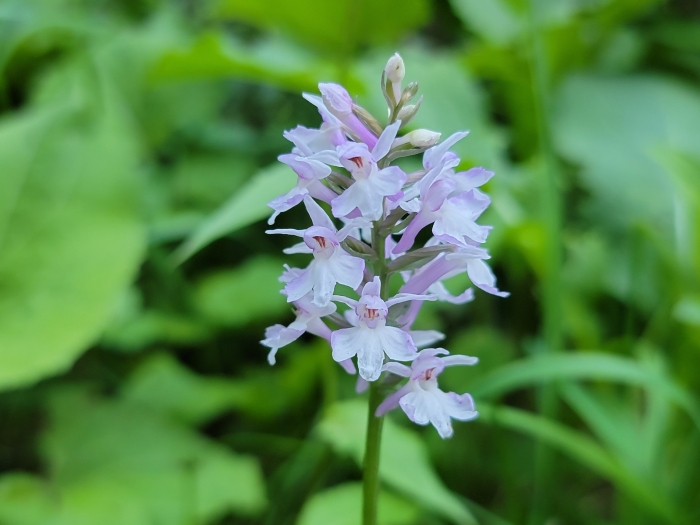Heath Spotted-Orchid
(Dactylorhiza maculata)
Heath Spotted-Orchid (Dactylorhiza maculata)
/
/

Elias
CC BY 4.0
Image By:
Elias
Recorded By:
Copyright:
CC BY 4.0
Copyright Notice:
Photo by: Elias | License Type: CC BY 4.0 | License URL: http://creativecommons.org/licenses/by/4.0/ | Rights Holder: Elias | Publisher: iNaturalist | Date Created: 2021-06-29T07:10:59-07:00 |

























Estimated Native Range
Summary
Dactylorhiza maculata, commonly known as Heath Spotted-Orchid, is a perennial herbaceous plant native to a variety of habitats including damp meadows, marshes, fens, and light woodlands across Europe and western Siberia. It typically grows up to 28 inches (70 cm) tall, featuring a rosette of green, often spotted leaves at the base, with a spike of pink to purple flowers that bloom from late spring to mid-summer. The flowers are moderately showy and attract a range of pollinating insects.
Heath Spotted-Orchid is valued for its ornamental flowers and is used in wildflower gardens and naturalistic plantings. It thrives in moist, well-drained soils that are rich in organic matter, and it requires a position in full sun to light shade. This orchid is generally low-maintenance but benefits from protection against excessive winter wetness. It is not commonly found in the horticultural trade but is sought after by orchid enthusiasts. In cultivation, it is important to replicate its native conditions, particularly the relationship with mycorrhizal fungi, which is crucial for its growth and survival. Over-collection and habitat destruction have led to its decline in the wild, making conservation efforts important.CC BY-SA 4.0
Heath Spotted-Orchid is valued for its ornamental flowers and is used in wildflower gardens and naturalistic plantings. It thrives in moist, well-drained soils that are rich in organic matter, and it requires a position in full sun to light shade. This orchid is generally low-maintenance but benefits from protection against excessive winter wetness. It is not commonly found in the horticultural trade but is sought after by orchid enthusiasts. In cultivation, it is important to replicate its native conditions, particularly the relationship with mycorrhizal fungi, which is crucial for its growth and survival. Over-collection and habitat destruction have led to its decline in the wild, making conservation efforts important.CC BY-SA 4.0
Plant Description
- Plant Type: Herb, Bulb
- Height: 1-2 feet
- Width: 1-2 feet
- Growth Rate: Moderate
- Flower Color: Pink, White
- Flowering Season: Summer
- Leaf Retention: Deciduous
Growth Requirements
- Sun: Full Sun, Part Shade
- Water: Medium
- Drainage: Medium
Common Uses
Border Plant, Butterfly Garden, Low Maintenance, Water Garden
Natural Habitat
native to a variety of habitats including damp meadows, marshes, fens, and light woodlands across Europe and western Siberia
Other Names
Common Names: Heath Spotted Orchid, Spotted Orchid, Moorland Spotted Orchid
Scientific Names: , Dactylorhiza maculata, Dactylorchis maculata, Dactylorchis maculata subsp. elodes, Dactylorhiza elodes, Dactylorhiza fuchsii subsp. transsilvanica, Dactylorhiza maculata var. ericetorum, Dactylorhiza maculata var. maculata, Dactylorhiza maculata var. oreophila, Orchis angustifolia
GBIF Accepted Name: